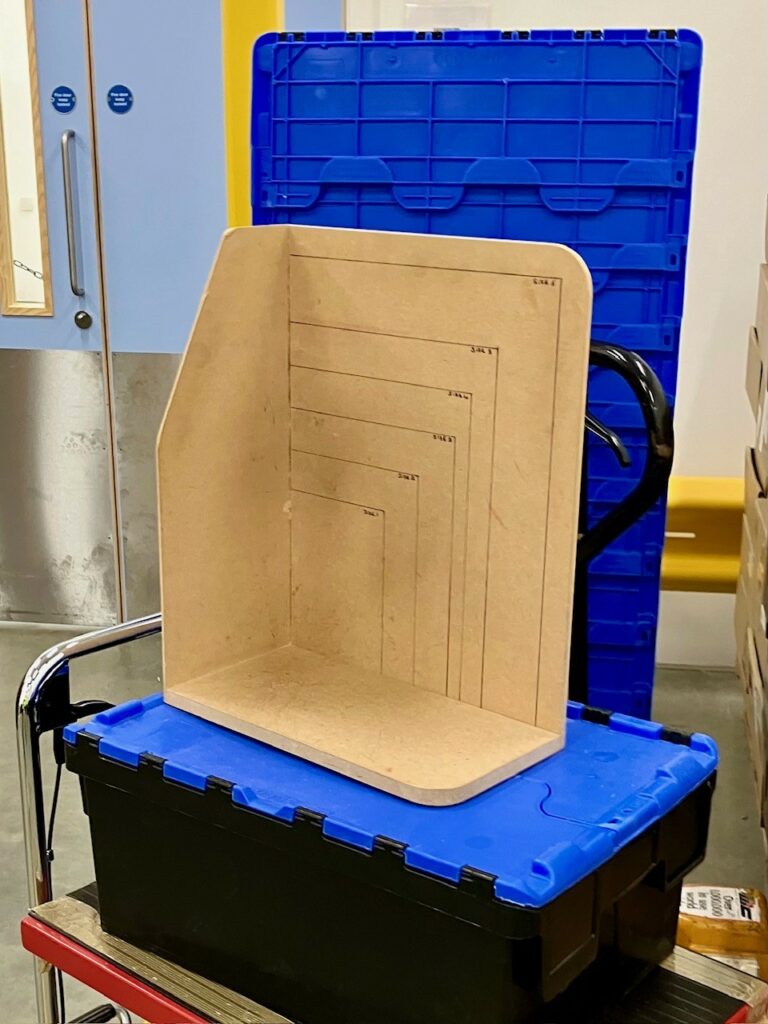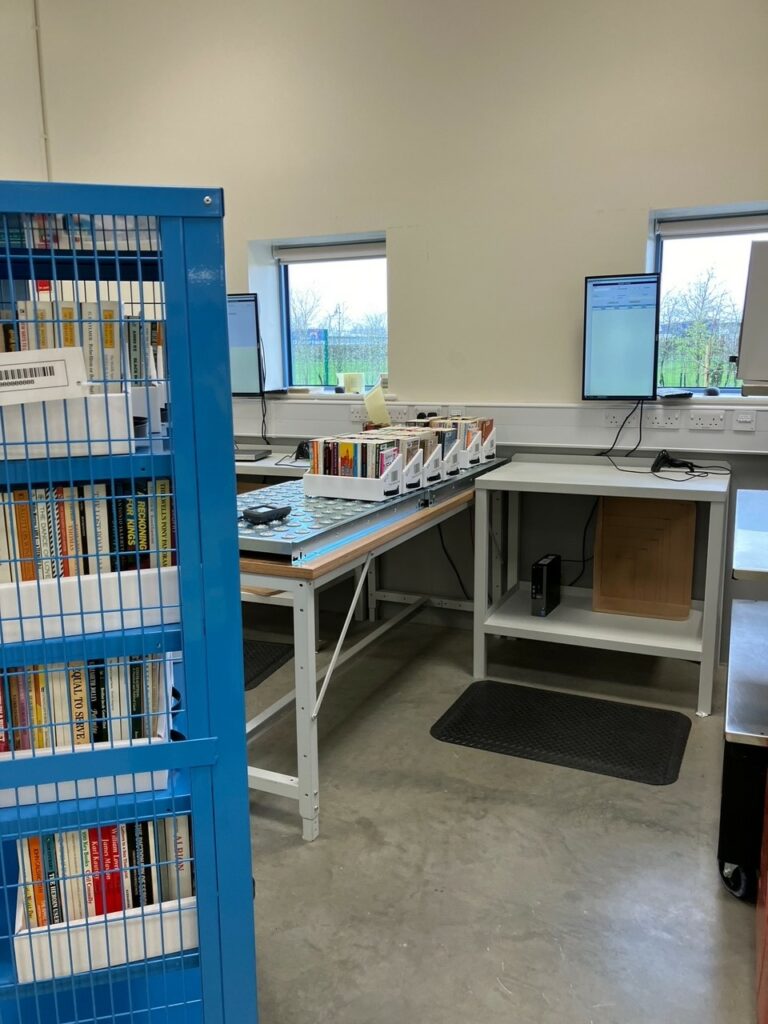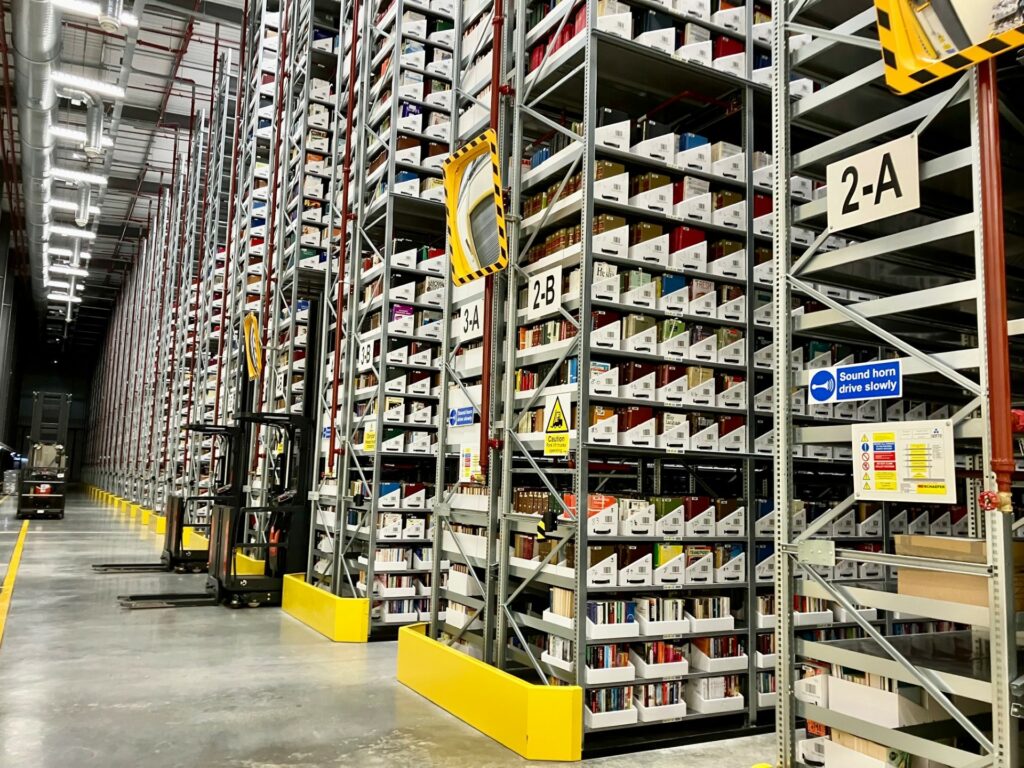On a wet and windy day at the end of February, the trainees hopped on a train to Ely, with visits scheduled for both the Cambridge University Library Storage Facility (LSF), and the Cambridgeshire Archives.
After initial difficulties figuring out how to get to the LSF (Uber failed us!), we eventually squeezed into a taxi and made it to the large warehouse on the outskirts of the city. The LSF is a purpose-built warehouse, providing over 100km of shelving space with the potential for holding up to 5.5 million items. With the UL being a Legal Deposit library, and therefore entitled to claim a copy of every published item in the UK and Ireland, the LSF is a useful solution for storing low use printed material, freeing up space in the UL for higher demand items.

Following the journey of a book through the LSF system, the warehouse team began our tour in the loading bay, where crates of books are received every day from the UL. The books are all sorted by size, using a wooden measuring scale to determine their category – this will then denote which size tray the books are stored in.
We were then taken through to the processing room, and shown the large pile of acid free cardboard ready to be transformed into trays. The team explained how they initially had to construct a tray every 90 seconds when the facility first opened to keep up with the number of books arriving from the UL. One of the trainees had a go at building a tray themselves, finding out first hand how fiddly they can be!

Once sorted into trays by size and weighed to make sure they are not too heavy for the shelves, every book is given a unique barcode and scanned onto the warehouse management system. This is then linked to the unique barcode given to the tray, which is then further connected to the barcode of the shelf where the tray is placed – all in all, the three barcode system ensures every book is tracked and can be found again. Each tray goes through quality control, with all items being double checked to make sure nothing has been misplaced. Having such a well organised system is essential for the smooth running of the LSF – as items can still be requested by readers from the UL, the team need to know where every book is stored, and keep track of where they will need to reshelve it once it’s returned.

Our final stop was the store room, where rows of 11m high shelves towered above us, with over 100,000 trays currently stacked upon them and room for another 300,000 more. The lower shelves can be accessed easily by the workers from the ground, and therefore hold smaller and lighter items. Larger and heavier items are shelved higher up, requiring the use of cherry-picker type machines, where trolleys of books can be loaded onto the back. Excitingly, we were all given the opportunity to go up in the cherry-pickers, which feel far faster than they look as they speed down the aisles! Many of the trainees didn’t quite realise how scared of heights they were until 11m up in the air – it’s definitely not a job for the faint hearted! The possibility of dropping a tray of book from this height was also terrifying to consider, although the warehouse team assured us this was very unlikely to happen, as the trolley on the back of the cherry-pickers is designed so that you can slide the trays onto the shelves, avoiding any heavy lifting and reducing the risk of things falling.


As the books are all organised by size, we noticed the variety of items that were placed together in trays, such as children’s books, modern literary fiction, cookbooks, and nineteenth century novels. The LSF mostly holds books, but there is also storage for maps, with drawers holding a range of material from ministry of defence maps to ordnance survey maps. We also saw some rather creepy looking paintings tucked down one of the aisles!
We had a wonderful time looking around the LSF and seeing all the behind-the-scenes aspects of how the UL maintains and stores its vast collection, whilst keeping it available for current and future researchers. Thank you to the LSF team for giving us such an in-depth tour and introducing us to how library warehouses operate. See part two of the Ely trip for our visit to Cambridgeshire Archives!
